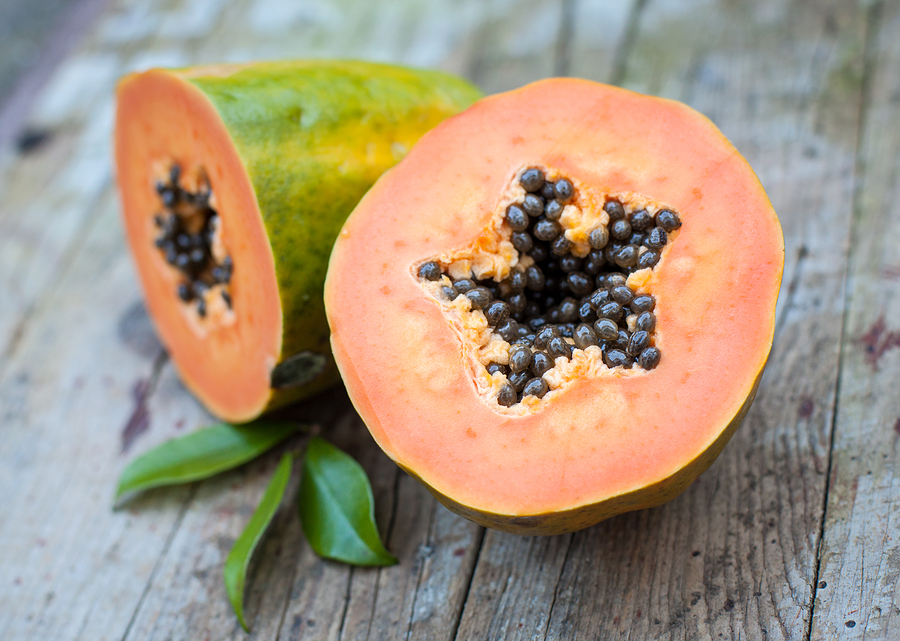- Make It Yourself Lavender Heart-Shaped Bath Bombs!
- 20 Things You Never Knew About “Down There”
- 12 Best Foods For Those Suffering From Arthritis Pain
- 12 Personal Hygiene Mistakes Almost Everyone Makes (Mom Never Told You About #4!)
- 15 Medicinal Plants And Herbs From The Cherokee People
- 12 Mind-Blowing Benefits Of Drinking Coconut Water During Pregnancy
- 12 Outstanding Winter Foods That Won’t Fatten You Up Like A Christmas Turkey
Are You Eating Poisoned Strawberries? The Truth About Chemical Residue On Fruit And Vegetables

Photo credit: bigstock.com
Most people would be shocked to know just how many chemicals can be found on the fruit and vegetables they eat every day. The substances are usually pesticides or herbicides (designed to kill weeds) which agricultural companies spray on their crops to prevent the destruction of their produce. Such practices have been going on for decades, and while it does save the crops, the use of these chemicals can have dangerous and unintended consequences.
Residue remains on the fruit and vegetables and can be ingested by people, leading to all types of health complications. In this article we’ll explore which chemicals are the most dangerous, which fruits and vegetables are most at risk of contamination, and practical steps you can take to protect yourself and eat healthy.
Chemicals Commonly Found on Food
One the chemicals used in food production that has received more attention in recent years is glyphosate. This chemical inhibits the shikimic acid pathway, an enzyme pathway necessary for the growth of most plants, and it does its job very effectively. Over the decades this herbicide has become the most widely used agricultural chemical of all time.
The problem is that glyphosate has been linked to a cornucopia of health issues, including miscarriages, gluten intolerance and celiac disease, disruption of sex hormones, and colitis. There is also evidence linking it to health problems in children through prenatal exposure, such as ADHD, lower IQ and cognitive function, possible risk of premature birth, lowered neonatal reflexes, and more.
The World Health Organization (WHO) has deemed glyphosate a “possibly carcinogenic” chemical. This remains a controversial designation, since most environmental and public health organizations in the United States such as the Environmental Protection Agency (EPA) and Food and Drug Administration (FDA) do not share this opinion. (Agricultural chemicals laws in the US are more relaxed compared to those of other developed countries.) However, the FDA and US Department of Agriculture (USDA) announced in 2016 they would begin testing for glyphosate residue on commercially available foods.
But there are other chemicals commonly found on foods as well. Bifenthrin is an insecticide often used in the cultivation of strawberries. This chemical is designated as a possible carcinogen by the state of California. Other chemicals include carbendazim, a fungicide used in the US but banned in the European Union, and atrazine, a pesticide with endocrine disrupting properties shown to interfere with hormone activity in both humans and animals.
Continue to Page 2

Photo credit: bigstock.com
Which Fruits and Vegetables Are Most Likely to be Contaminated?
The Environmental Working Group (EWG) is a nonprofit food safety organization which publishes a “Shopper’s Guide to Pesticides in Produce” annually. It provides a list of fruits and vegetables considered to be the most at risk of contamination, based on their research.
The 2016 list of the top ten produce items most at risk of contamination are:
- Strawberries
- Apples
- Nectarines
- Peaches
- Celery
- Grapes
- Cherries
- Spinach
- Tomatoes
- Sweet Bell Peppers
(Cherry tomatoes and cucumbers also made the list as honorary mentions.)
Strawberries in particular are one of the fruits most likely to have harmful chemical residues on them. Most crops only use a few chemicals on a given crop, but some commercial growers are using more than 60 different types on their strawberries. These are probably extreme cases, but even still, more than 40 percent of strawberries tested by the EWG contained residues from 10 or more different kinds of chemicals. According to agricultural records concerning strawberry cultivation in California for the year 2014, more than 300 pounds of pesticides were used per acre of strawberries in a year.
This doesn’t mean you have to swear off strawberries or the other items on this list. But it does mean there are definitely some precautions you should take to minimize your risk.
Whenever possible, buy organic varieties of the twelve items listed above, and always rinse truthfully before eating or preparing them.
Continue to Page 3

Photo credit: bigstock.com
The good news is that not all fruits and vegetables are commonly contaminated. The EWG also releases a “Clean Fifteen” list of produce with minimal risk of chemical residue. The list for 2016 is as follows:
- Avocados
- Sweet corn
- Pineapples
- Cabbage
- Sweet peas (frozen)
- Onions
- Asparagus
- Mangos
- Papayas
- Kiwi
- Eggplant
- Honeydew melon
- Grapefruit
- Cantaloupe
- Cauliflower
These foods are generally regarded to be safe to buy in “conventional” or non-organic varieties.
Now organic foods usually cost a bit more, and sometimes they are not always available, so simply saying “buy organic” is not always practical advice. It’s important to keep in mind that eating any vegetables and fruits is still better than eating none at all. But one should always take whatever precautions they can, and if organic foods are available, then it’s usually wiser to go with that option.
READ ALSO: Top 15 Contaminated Fish You Shouldn’t be Eating
Being a health-conscious person requires taking ownership of your health and responsibility for your nutrition and lifestyle choices. As laws and regulations change, the lists of which foods are safe and which ones are at risk will change as well. It is important to educate yourself and stay on top of health news so you can make the best food purchasing decisions for yourself and your family.
References:
































